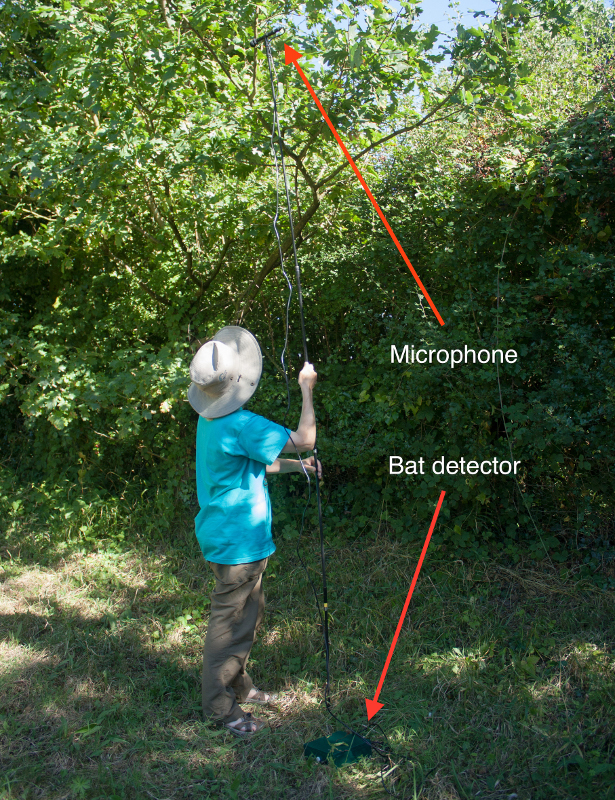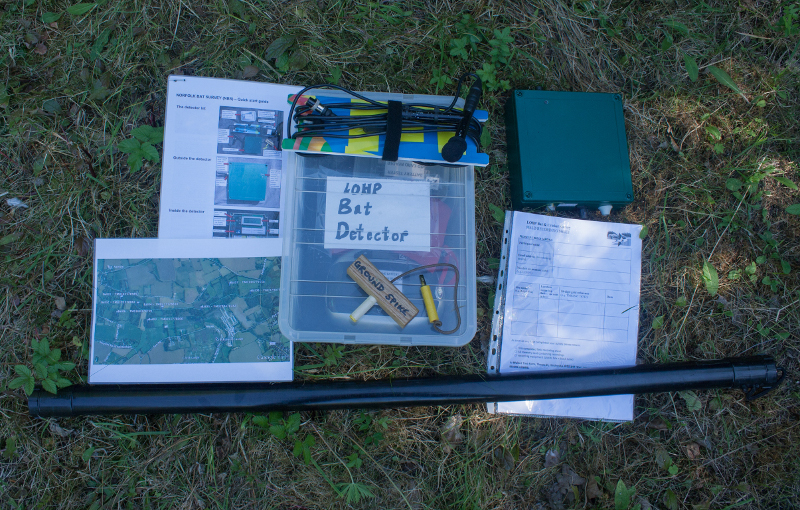Surveying bats and crickets in the Little Ouse valley

Setting up the bat detector
LOHP’s static bat detector is telling us about the bats and crickets frequenting the night skies and bushes of the Little Ouse valley, thanks to a partnership with Dr Stuart Newson at the BTO who analyses the ultrasonic recording data for us as part of the Norfolk Bat Survey. So far, the detector has recorded plenty of abundant species like Common and Soprano Pipistrelle, and also less common species like Natterer’s, Serotine, Barbastelle and Daubenton’s.
Have a go at bat (and cricket, and bird) recording!
Between May and early October, volunteers can book the detector for a 3-day period and put the detector out on any LOHP site, or even in your own garden or near where you live.
The detector comes with a set of step-by-step operation instructions. Put it out an hour before dusk, collect it in the morning, and a week or two later, you’ll receive an email from the Norfolk Bat Survey with a summary of what bats and crickets you recorded. Bird recordings will be contributing to acoustic identification development work at the BTO.
Your data will contribute to a growing ‘bat- and cricket-scape’ of the Little Ouse valley!

The components of LOHP’s detector kit, including detector, microphone and pole, recording data sheets, battery charger and instructions
How to participate in the LOHP Bat & Cricket Survey
- Book the detector for any 3-day period.
- Collect the detector on your first survey day.
- Choose an LOHP site (see laminated map of standardised locations included with the detector) or any location near you.
- If the weather is suitable on night 1, put the detector out an hour before dusk, following the provided instructions. Record the 10-digit OS grid reference of the location using your smartphone or a handheld GPS. Locations can also be identified later using Google Earth.
- Collect the detector the following morning.
- Fill out this online recording data form (or one of the paper forms in the box) with the date and location of your survey.
- Repeat #3-6 at two more locations of your choice on nights 2 and 3.
- Return the detector by noon on the day following your 3rd survey. Make sure you have filled out a line on the data form for each of your survey nights.
Useful links and downloads
Instructions on how to use the detector
Recording form (paper version)
Example summary output from a bat recording session

